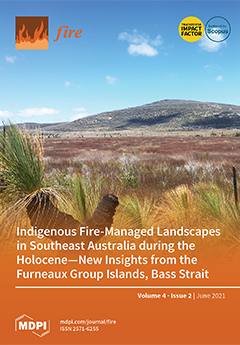Imperata cylindrica is a perennial grass that often proliferates in fire-affected forests. Recent fire events have been consistently associated with a lowering of soil nitrogen (N) to phosphorus (P) ratios. Thus,
I. cylindrica might have a tendency toward P-limited growth and/or tolerance for
[...] Read more.
Imperata cylindrica is a perennial grass that often proliferates in fire-affected forests. Recent fire events have been consistently associated with a lowering of soil nitrogen (N) to phosphorus (P) ratios. Thus,
I. cylindrica might have a tendency toward P-limited growth and/or tolerance for low soil N availability that confers a competitive advantage post-fire. We contrasted soil and
I. cylindrica chemistry between recently burned and unburned areas in eastern Australia.
Imperata cylindrica foliar N:P ratios were 21% lower in burned areas than in unburned areas, reflecting an increase in the uptake of P, but not N, post-fire, consistent with P-limitation. We then grew
I. cylindrica seedlings in soils with differing fire-exposure histories and subjected them to various resource amendments (including N and P addition). Survival of
I. cylindrica seedlings was not affected by the fire-exposure history of soil, but was reduced by 66% through N-addition. Soil fire history did not significantly affect
I. cylindrica growth, but addition of P greatly enhanced
I. cylindrica growth, particularly on unburned soils. Our results indicate that the association between
I. cylindrica and forest fire regime could be facilitated, in part, by the short-term positive effect of fire on soil phosphorus and the long-term positive effect of fire-exclusion on soil nitrogen, particularly on well-weathered soils.
Full article





